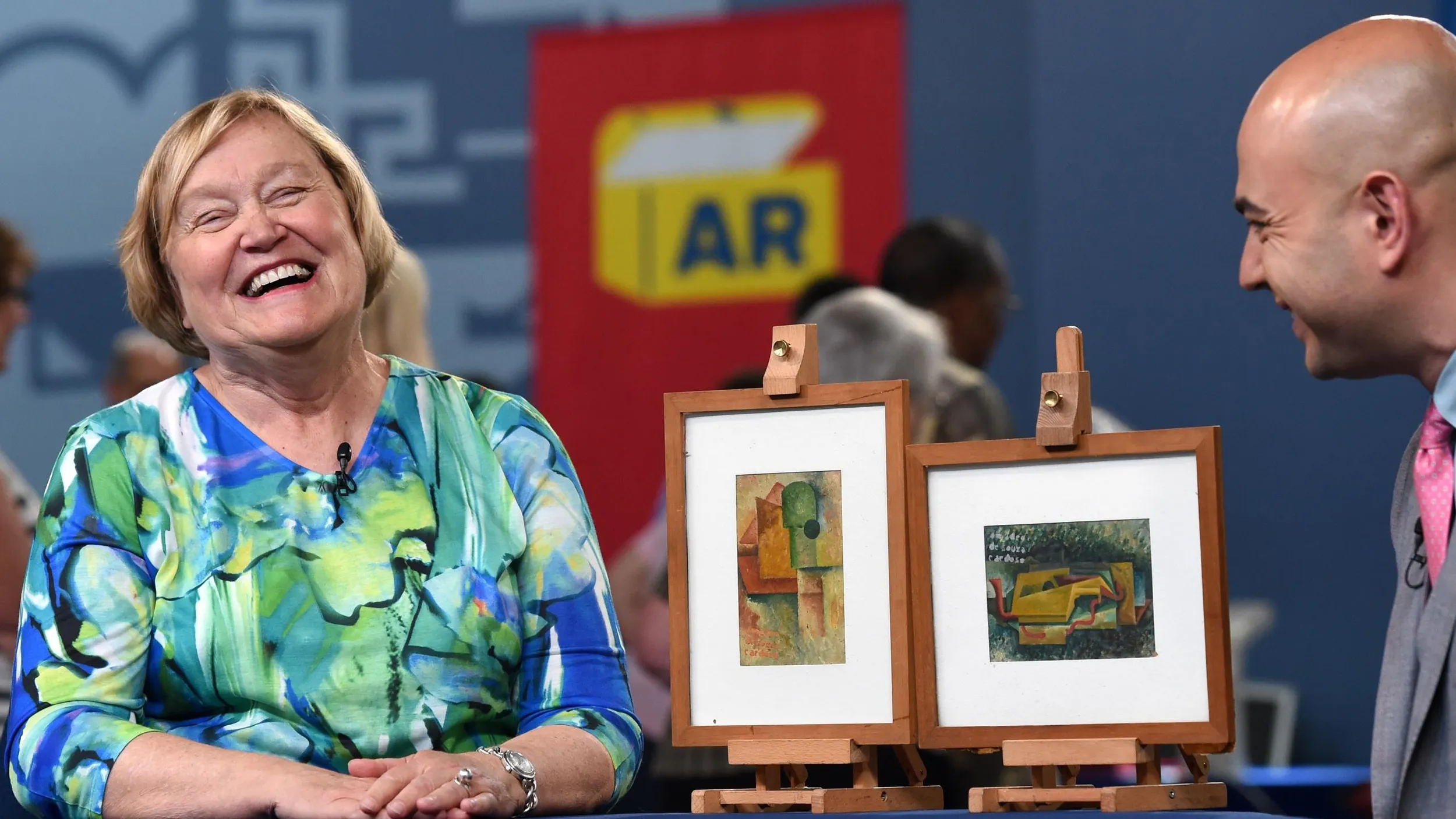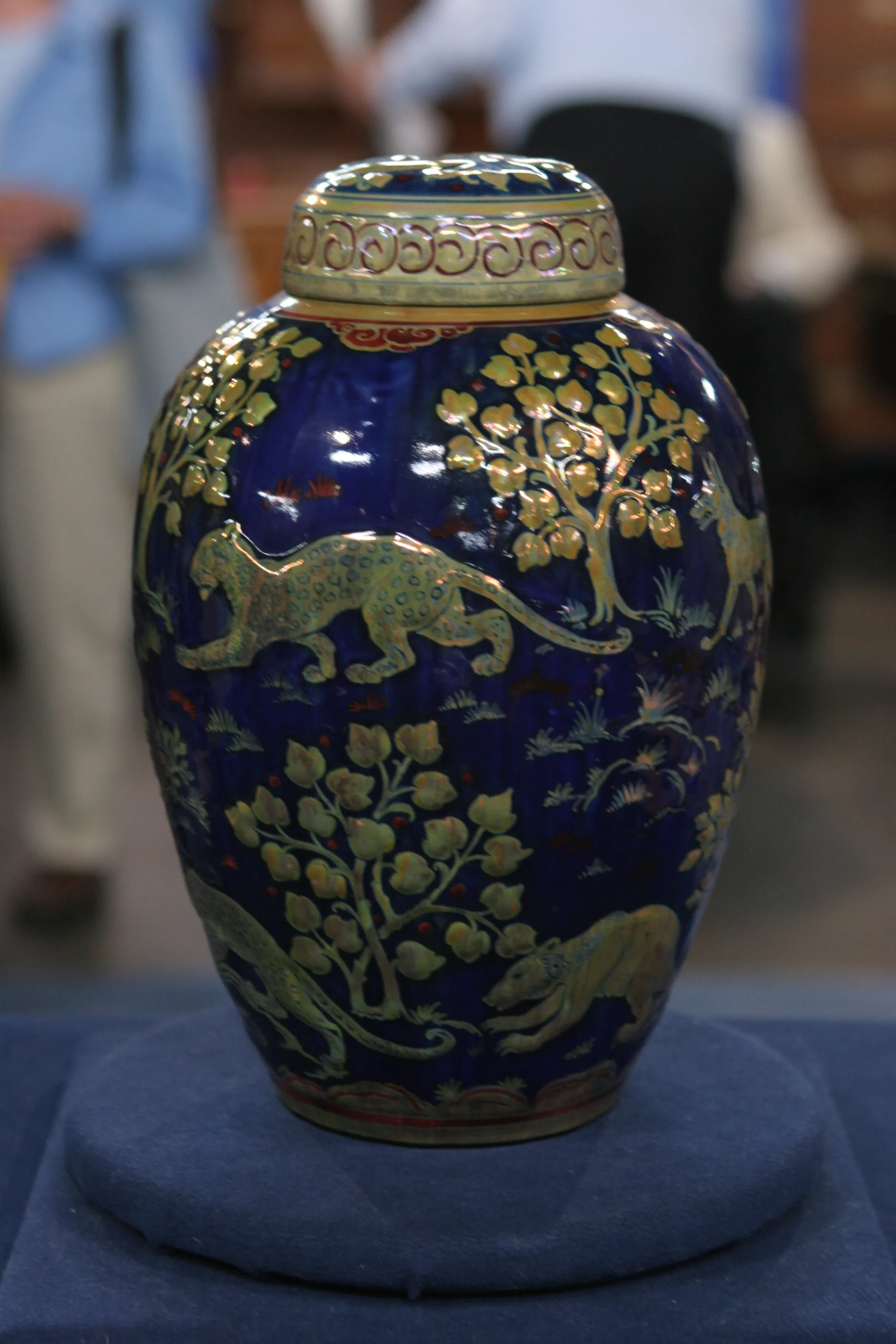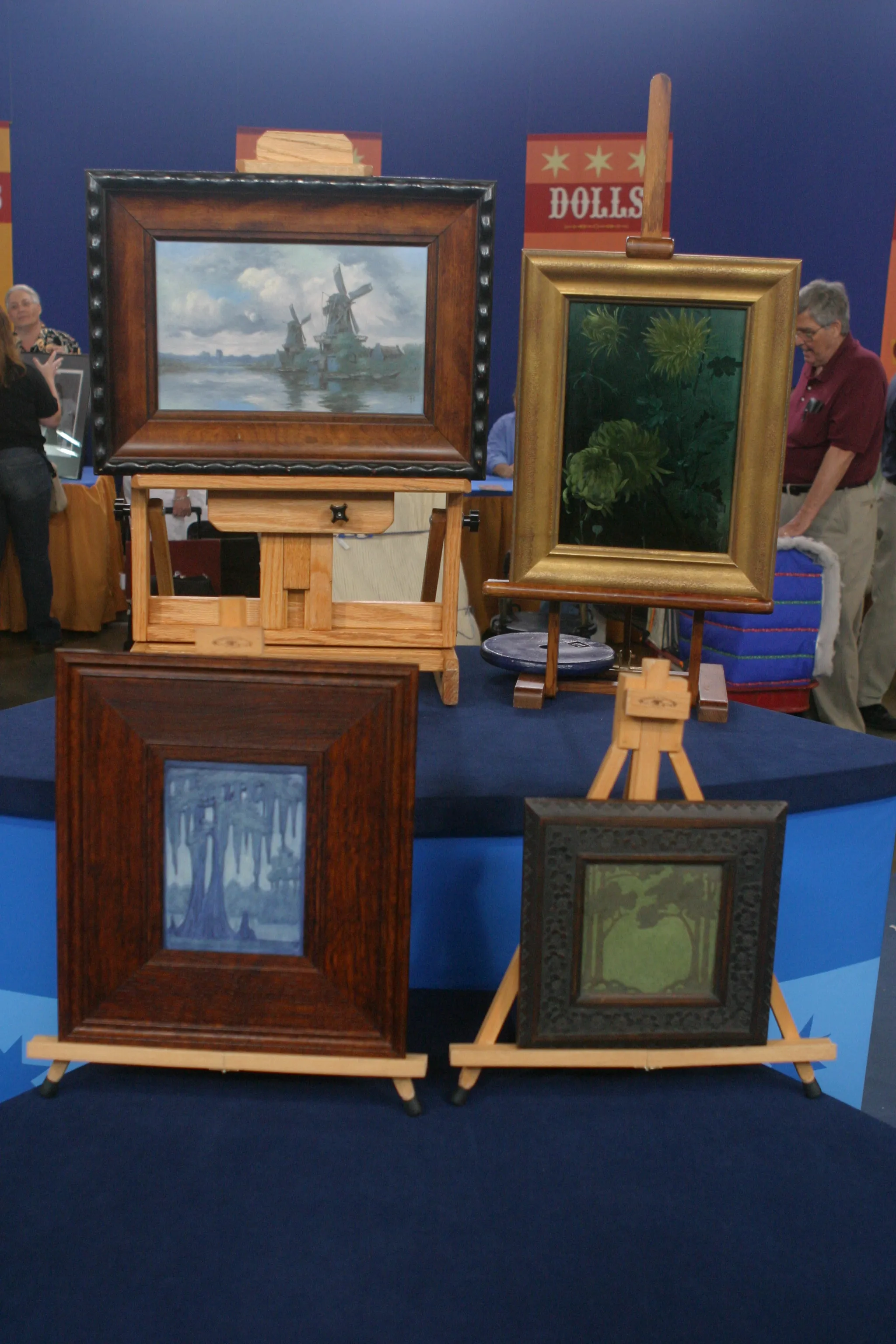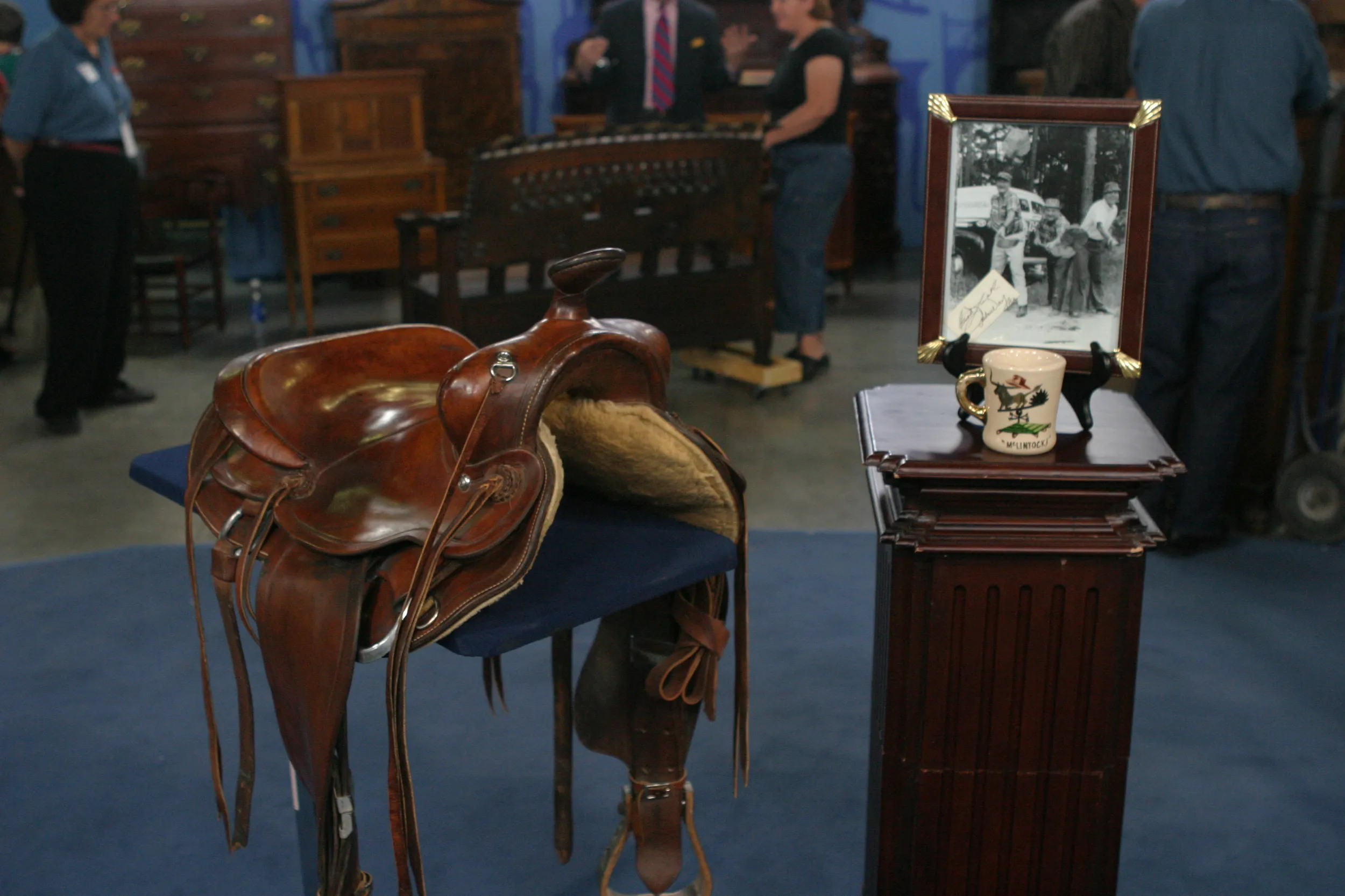GUEST: Well, I bought it about 20, 25 years ago at a little antique shop in Oregon. It was so unusual. At the time, I hadn't seen anything like it. And I said, "I have to have it." I think I paid $75 for it. And we've had it all these years. I found the company, but I can't find any records of the company making this particular piece.
APPRAISER: Well, when you say you found the company, let's turn it over and look at the mark. There's a mark here. Is this what you're referring to?
GUEST: Yes, what I have not been able to find is this particular mark.
APPRAISER: Well, what you're looking at is two marks. This is not the company mark, in fact. This is a retailer mark—a retailer from Boston from the second half of the 19th century. This is the company mark. And if you look at them, they're kind of obliquely set. So this was stamped first, this was stamped later. And this is the mark of a well-known English porcelain company called Crown Derby.
GUEST: Oh, okay.
APPRAISER: Crown Derby is known widely as Royal Crown Derby, we call it, but in fact, this wasn't Royal Crown Derby at this point. Didn't become that until 1890. Now we know who made it. And you say you had to have it, and we hear that sometimes, but tell me a little more about that.
GUEST: It's just a very unusual piece. I've seen pitchers before, but not figural pitchers, and especially owls. And it's got such beautiful artwork on it. And that's… it's just eye appealing.
APPRAISER: Do you have a thing about owls? Do you collect owls?
GUEST: I do, I do. Growing up as a kid, we had a great big barn, and we had white barn owls that slept in the barn. And it just reminded me of that, and I thought, "Well, that's probably going to be my only chance to get a white barn owl." So I figured, "Let's just go with this one."
APPRAISER: Well, it's always great when an object reminds you of a happy time in your life or childhood. So it is, as you say, an owl. It's actually not a barn owl. It's kind of a generic owl, I would say.
GUEST: Okay.
APPRAISER: But white and strong and superbly modeled, which is what you'd expect, by the way, from Crown Derby.
GUEST: Okay.
APPRAISER: At the time, the time in this case being, I would say, about 1875, something like that.
GUEST: Okay.
APPRAISER: They were really among the top three porcelain manufacturers in England In terms of their quality-- well established, very highly respected, with a strong network of distributorship, including in this country.
GUEST: Okay.
APPRAISER: So this would have appealed to and found its way to a fairly wealthy American home at the time.
GUEST: Okay.
APPRAISER: And it's a jug, of course. I call it a jug rather than a pitcher because it's English, and "jug" is the English vernacular for what we call in America a pitcher. And jugs of this type, Victorian jugs, were intended to use. They would be used in a conservatory, maybe, for lemonade or iced water or something like that. Well, I think you did just fine in terms of what you paid for it. It's a great auction piece, I think, because if you put it at auction, it would photograph beautifully. It's in great condition. I would think if it came to auction, the right auction estimate would be between $700 and $900.
GUEST: Wow, okay.
APPRAISER: Now, having said that, you know how it works at auction. If two or three people...
GUEST: Right, right.
APPRAISER: But that would be the estimate that's...
GUEST: That's wonderful, that's wonderful. It was a good investment. I'm glad I have it. I mean, it's a beautiful piece.














